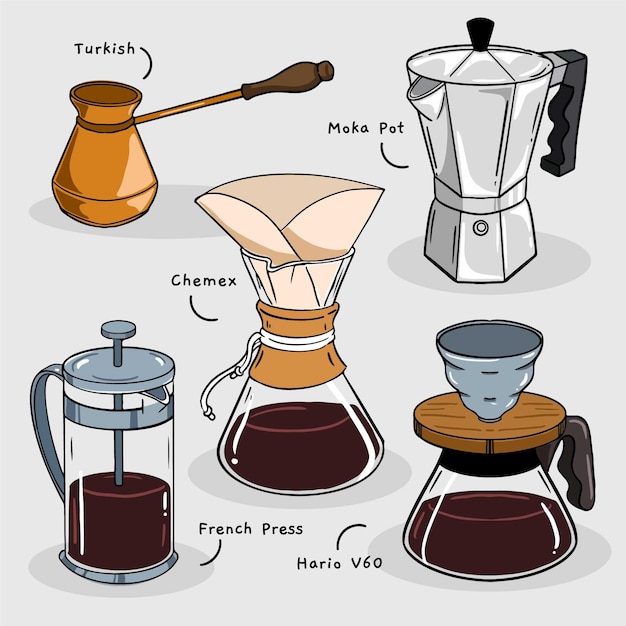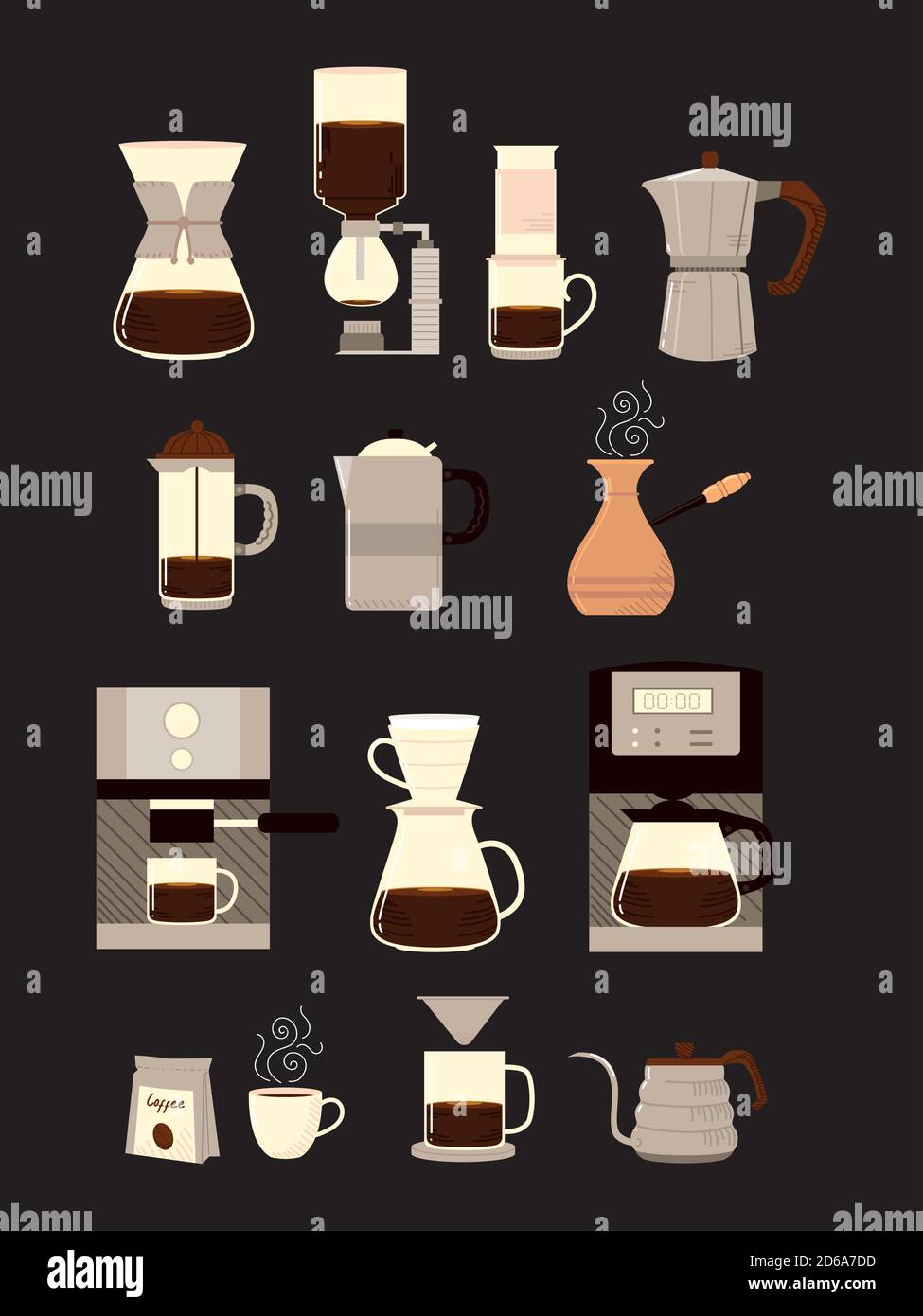The Scientific Research Behind Coffee Developing: Exactly How Temperature and Time Affect Your Beverage
Recognizing the scientific research behind coffee developing discloses that temperature level and time are not mere variables however critical aspects that dictate the beverage's flavor account and overall high quality. As we discover the subtleties of these components, the concern arises: how can one effectively equilibrium temperature level and time to accomplish that perfect brew?
The Chemistry of Coffee Removal
The chemistry of coffee removal delves right into the elaborate procedures that change raw coffee beans into the aromatic beverage appreciated worldwide. This improvement primarily includes the solubility of various substances present in the beans, which are affected by elements such as grind dimension, water high quality, and the developing method employed.
During the developing process, hot water functions as a solvent, extracting soluble compounds, consisting of high levels of caffeine, lipids, sugars, and acids, from the coffee grounds. Each substance adds to the flavor account, aroma, and body of the final beverage. Acids are responsible for intense and tangy notes, while oils add to an abundant mouthfeel.
The first phases of brewing extract acids and sugars, leading to a pleasant level of acidity, while extended extraction can lead to anger due to over-extraction of unwanted substances. Recognizing these chemical interactions is important for maximizing brewing techniques, as the balance between extraction time and water temperature level can considerably influence the total quality of the coffee.
Ideal Brewing Temperatures
Finding the appropriate developing temperature level is important for unlocking the complete possibility of coffee tastes and scents - coffee brewing methods. Research shows that the ideal array for brewing coffee exists in between 195 ° F to 205 ° F(90 ° C to 96 ° C) Within this array, the removal process effectively dissolves the preferable soluble compounds in coffee beans, causing a tasty and balanced mug
Brewing at reduced temperatures, such as below 195 ° F(90 ° C ), might result in under-extraction, generating a weak and acidic brew with low-key flavors. Alternatively, developing at temperature levels surpassing 205 ° F(96 ° C) can lead to over-extraction, producing a extreme and bitter taste because of the too much dissolution of unwanted substances, such as tannins.
Moreover, the perfect developing temperature can differ relying on the coffee bean type and roast level. Lighter roasts usually profit from a little greater temperatures to boost their complicated taste profiles, while darker roasts may be better matched to lower temperature levels to alleviate anger.
Eventually, keeping accuracy in developing temperature levels is critical for accomplishing a harmonious balance of tastes, making sure that every mug of coffee supplies a gratifying sensory experience.
Effect of Developing Time
Developing time plays an essential function in establishing the flavor profile and general quality of coffee. The removal process, which influences the preference, fragrance, and body of the drink, is mainly reliant on the length of time the coffee premises are in contact with water. Shorter brewing times can result in under-extraction, leading to a sour or weak taste, as not nearly enough soluble compounds are dissolved. Alternatively, extended developing can bring about over-extraction, where unwanted compounds are released, causing a bitter or astringent taste.
Optimum developing time varies relying on the technique made use of and the work dimension of the coffee. A French press generally calls for about four mins, while espresso extraction is typically finished within 25 to 30 seconds. It is vital to adjust brewing time in conjunction with other variables, such as water temperature level and coffee-to-water proportion, to attain the desired flavor profile.
Understanding the influence of brewing time enables coffee lovers to refine their developing strategies, inevitably enhancing the sensory experience of their cup (coffee brewing methods). With cautious focus to this variable, one can open the complete capacity of the coffee, disclosing its special characteristics and subtleties
Brewing Methods and Their Impacts

For circumstances, approaches like French press and cool brew permit a much longer steeping time, leading to a fuller body and durable flavor as a result of increased extraction of oils and soluble solids. Conversely, espresso brewing makes use of high pressure and a shorter extraction time, producing a focused shot that highlights extreme tastes and an abundant crema.
Pour-over methods, such as Chemex or V60, supply a more controlled extraction procedure, permitting the maker to manipulate circulation rate and water circulation, which can boost illumination and clearness. Percolation methods cycle water via the coffee premises multiple times, leading to a stronger, often bitter taste.
Lastly, making use of paper filters versus steel filters can likewise influence the last taste; paper filters usually produce a cleaner cup by trapping oils and fine bits, while steel filters permit more oils to pass through, contributing to a fuller mouthfeel - coffee brewing methods. Recognizing these subtleties can elevate the coffee experience considerably
Tips for Developing Your Mixture
A well-executed brew can transform also the simplest coffee click over here now into an impressive experience. To achieve this, attention to detail is crucial. Begin with top quality, freshly roasted beans, as their taste profile lessens over time. Grind the beans prior to making to optimize quality, making certain the work dimension matches your brewing approach-- coarser for French press and finer for coffee.
Water quality plays a critical duty; use filtered water without impurities. The perfect brewing temperature level ranges in between 195 ° F and 205 ° F(90 ° C to 96 ° C ) Too hot can swelter the coffee, while also cool may under-extract flavors.
Timing is similarly important. For immersion approaches, steeping for 3 to 5 mins is optimum, whereas drip approaches commonly take around 5 mins. Trying out brew times to find your recommended stamina.

Verdict
In recap, the intricate partnership in between temperature and time is vital in the coffee brewing procedure. Recognizing these scientific concepts equips people to refine their developing techniques, inevitably leading to a much more balanced and delightful coffee experience.
Recognizing the scientific research behind coffee brewing reveals that temperature and time are not simple variables but crucial aspects that determine the beverage's taste account and total high quality. Understanding these chemical interactions is vital for optimizing developing techniques, as the balance in between removal time and water temperature can considerably influence the total top quality of the Continue coffee.Developing time plays a crucial role in figuring out the flavor account and overall top quality of coffee. By focusing on these elements-- bean top quality, grind dimension, water temperature, soaking time, and proportion-- you can boost your coffee brewing process, resulting in a constantly premium cup.
In summary, the elaborate connection in between temperature and time is vital in the coffee brewing process.